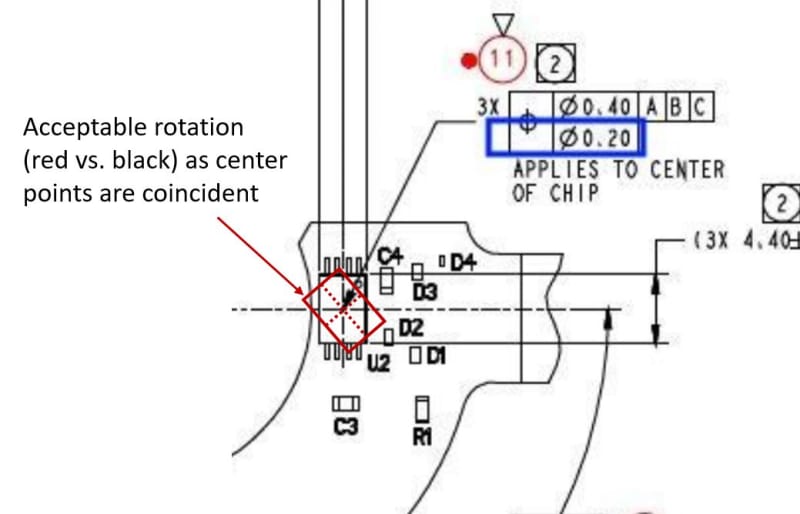Please advise if it is correct on the FRTZF tolerance of position calculating, without any reference datums on the lower segment.
Thanks
Season
Thanks
Season
Follow along with the video below to see how to install our site as a web app on your home screen.
Note: This feature may not be available in some browsers.
Would you please advise the link.3DDave said:I posted a paper gaging spreadsheet that includes that calculation
3DDave said:Composite tolerance feature control frames are intended to release some degrees of freedom - not all of them.
3DDave said:pmarc - I should have added a 10000 word essay explaining every possible condition. I'll get right on that.
3DDave said:So I'll go back and change it to: except in the cases of coaxial holes it is generally not useful, even though it is completely legitimate, to omit all datum references in the ... and so forth.
pmarc said:I don't think that based on that calculation you will be able to say all 3 centers can simultaneously be that far or that close from/to each other.
All I want to say by applying this kind of composite callout is that I do not care about perpendicularity of the holes relative to datum plane A and about location of the holes relative to B as much as about spacing between the holes within the pattern. Granted, the datumless lower segment is probably more challenging to inspect than the lower segment referencing A primary, but this does not mean the part has to be rotated 45 degrees about the vertical axis to check this requirement.3DDave said:So if the part has to be rotated 45 degrees about the vertical axis to see that the holes meet that requirement, that's what you would expect from what fabrication process?
Not sure if you noticed, but I explicitly stated in the text right next to the FRTZF that it could be defined at LMC basis. Also, not sure what you mean by "a separate LMC requirement".3DDave said:Wouldn't a separate LMC requirement be the preferred choice for controlling remaining thickness explicitly?
pmarc said:and regardless if the position tolerance zone should be cylindrical or have different values in radial and circumferential directions) is that by controlling position of the "centers" of the chips (even if we assume that the drawing clearly defines what the "center" really means) the chips are allowed to rotate freely about their individual "centers".

Thats an interesting point that I hadn't considered - that the reduction of requirements (removal of datum feature in a DRF and resulting DOF) might actually make a part more difficult to inspect. Definitely something I'll have to keep in mind in the future.pmarc (10 Dec 18 12:12) said:Granted, the datumless lower segment is probably more challenging to inspect than the lower segment referencing A primary
